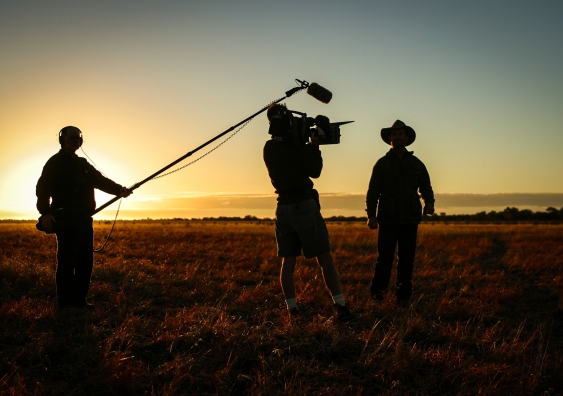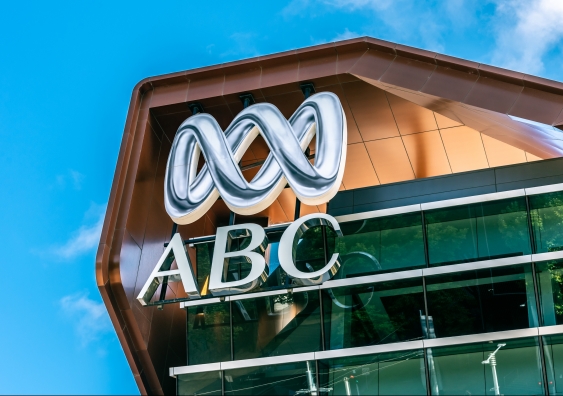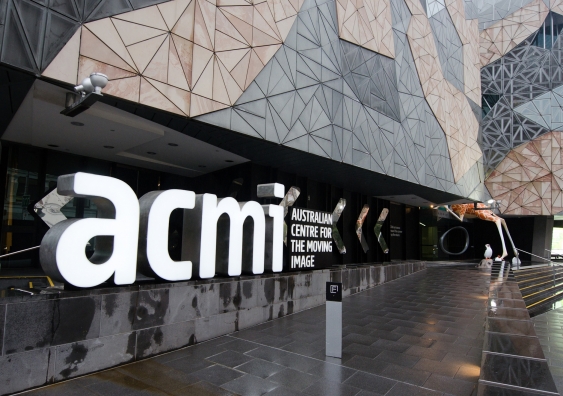Content quotas are a start - but Australia's screen industry needs more
The forthcoming screen industry consultation needs to consider more than content quotas to ensure a strong and thriving Australian screen industry, says UNSW expert.
The forthcoming screen industry consultation needs to consider more than content quotas to ensure a strong and thriving Australian screen industry, says UNSW expert.

Ben Knight
UNSW Media & Content
(02) 9065 4915
b.knight@unsw.edu.au
Broadcasting content quotas are a form of television industry regulation which mandate the production of local, Australian and children’s content. They have been enforced, in one form or another, on commercial television networks since the 1960s.
Although the arrival of international streaming platforms like Netflix, Disney+ and Amazon Prime changed the television mediascape in Australia, governments have not enforced content quotas on these platforms – until now.
As part of Revive, the new National Cultural Policy, the federal government announced they will move forward with content quotas for the international streamers, and will be negotiating the details in a consultation process.
“As an academic and filmmaker committed to Australia’s national cinema and television, I am a strong defender of local quotas,” says Associate Professor Jane Mills, screen studies researcher from UNSW Sydney’s School of Arts and Media.
Local content quotas are necessary to remedy market failure, protect Australian stories, enrich audience experience, and provide jobs for Australian screen professionals, says A/Prof. Mills.
“This is a terrific step forward but there are several important considerations and additional measures needed to ensure that the Australian screen industry – and its audiences – can get the most out of this new policy.”
Good content quota regulation needs to go beyond the number of local programs and ensure quality, diversity and the number of hours.
“The upcoming consultation must consider not just the percentage of Australian programs on streaming platforms, but also the hours,” says A/Prof. Mills.
“What’s happened in the past is that to meet the minimum quota, broadcasters can screen several short programs that are cheaply and poorly produced – ‘quota quickies’ as they’re known. Content quotas must include protections for length and quality as well.”
This government recognises that certain genres like First Nations programs, drama, documentary and programs for young people are expensive to produce and need special protections within the proposed content quotas.

Diverse Australian stories and their ensured quality will be key to successful content quotas. Photo: Shutterstock.
"Diversity definitely needs to be part of our definition of local content,” A/Prof. Mills says.
“Contemporary Australia is diverse, often transnational and transcultural in its outlook, and the stories we choose to tell should reflect that. This means recognizing that Australians’ cultural borders extend far beyond the English language.”
Australian drama programs, in terms of the actual number of productions and the number of hours, have declined significantly in the last two decades. Similarly, documentary and local children’s content can be costly to produce for what producers perceive to be a small audience – reflecting market failure.
“Being an English-speaking country puts Australia’s local production industry at a disadvantage,” says A/Prof. Mills. “It’s much cheaper for broadcasters to purchase drama and documentary content from the UK and US than to produce it locally.
Read more: What is a cultural policy and why does Australia need one?
“I am particularly concerned about the decline in documentary filmmaking in Australia. Documentary is an at-risk genre because the definition of 'documentary’ is very loose. For instance, commercial broadcasters can include reality TV in their documentary quota obligations, which is problematic – the documentary form is very different from being ‘non-fiction.’
“I’d like to see more discussion and clearer definitions and protections of local content Australian documentaries as part of the discussion around quotas for streaming services.”
After years of stagnation, we finally have a supportive and receptive federal government willing to work with the Australian screen industry, says A/Prof. Mills.
“With the proposed consultation process, we have an opportunity to review and discuss all options for creating a thriving and vibrant screen industry in Australia,” she says.
There’s been a lot of attention on streaming services, but commercial and public free-to-air broadcasters shouldn’t be ignored in the forthcoming discussions.
The ABC and SBS operate under special charters which set out their goals and purpose as public service broadcasters, but these do not explicitly mandate the production of local content.
“Their charters have worked well so far, but we now have an opportunity to review content quotas across free-to-air and subscription television, as well as streaming services,” suggests A/Prof. Mills.

Australia's public and commercial broadcasters should not be ignored in the upcoming content quota review, says A/Prof. Mills. Photo: Shutterstock.
“The new National Cultural Policy promises funding certainty for our public service broadcasters, but this doesn’t go far enough,” she says.
“Funding needs to be restored to levels from before the successive slashes from previous governments, and ongoing funding should keep in track with inflation and rising costs.
“If the government is stuck for ideas as to how to raise revenue, they can consider properly taxing large global streaming platforms appropriately. Netflix, for example, reportedly earned $1.6 billion in Australia in the first quarter of 2022, and yet paid only $868k in tax the previous year.
“If there’s a loophole in our taxation system, then this needs attending to. It certainly needs investigating and more transparency.”
Currently, commercial free-to-air broadcasters must meet a 55 per cent Australian program quota, and yet the figure floating around now for streaming providers is 20 per cent, which A/Prof. Mills finds concerningly low.
“The European Union has 30 per cent quotas and some of its members impose a higher percentage, Indonesia insists on 40 per cent and Canada imposes 45 per cent. By comparison Australia’s goal is low,” she says.
At the moment, Australian regulations and financial incentives are not giving the Australian screen industry an advantage.
“Federal and state governments also need to reconsider their financial incentives for international production companies to work in Australia,” says A/Prof. Mills.
“While these incentives give good opportunities for local film professionals to gain employment and experience without leaving the country, they do not guarantee that the stories these production companies make are Australian ones. We need to find a policy middle ground.”
Another important area that needs discussion is what counts as Australian content. Given the diversity that exists in multicultural Australia, this is not easy.
“We need to review what is meant by ‘local’,” says A/Prof. Mills. “Screen Australia has a definition, but it is complex determining whether a project has significant Australian content.“
To meet the so-called 'SAC test', Screen Australia has to be satisfied that the production has significant Australian content in regard to: the subject matter of the film; the place where the film was made; the nationalities and places of residence of the persons who took part in the making of the film; the details of the production expenditure incurred in respect of the film, and any other matters that we consider to be relevant.
“This last criterion is clearly imprecise but one hopes it can be interpreted as including of Australia’s role and relationship with other nations and our cinema’s role in global cinema,“ A/Prof. Mills says. “Clarification on this would be useful.“
Ultimately, Australian stories are important to our national identity and nation building, A/Prof. Mills says.
“However, if a documentary filmmaker wants to investigate conditions in a foreign mine or corruption in a foreign government but can only work with a foreign crew, is their production any the less Australian than another filmmaker whose film is about a NSW oyster farmer, for example? After all, we’re all global citizens, too.
“A clear but not too restrictive definition will boost multicultural content production and allow our screen industry to find a voice within the transnational screen community around the world.”
Alongside quotas and investment in production, Australia needs to also think long-term about where tomorrow’s artists, actors, writers and filmmakers are coming from.
"Investment in screen education and increased arts literacy is a must and we need to put greater emphasis on arts subjects in the Australian national curriculum,” says A/Prof. Mills. “Furthermore, we need to think of film, television and video as an art form.”
“This is something that the current government does recognise, but the states can play their part by recognising a wider range of art forms in their school curriculums.

Increasing arts literacy will benefit Australia's screen culture. Photo: Shutterstock.
“To support screen education and literacy, I would love to see a discussion about how we can enhance screen culture in Australia in the upcoming review. Screen culture isn’t limited to production, distribution, exhibition and education. It’s about knowledge, understanding and, above all, pleasure – it’s something that is greater than the sum of its parts.
“For instance, Sydney is Australia’s only major capital city that doesn’t have a dedicated cinematheque. So, we also need to discuss how audiences might be encouraged to want to see and enjoy not just more Australian content but also the sort of productions that don’t get shown at all on television and streaming platforms.
“The Australian screen industry and its audiences can only benefit from such an approach.”
A previous version of this article included an error in relation to Screen Australia's definition of Australian content. It has been amended to reflect the correct definition.